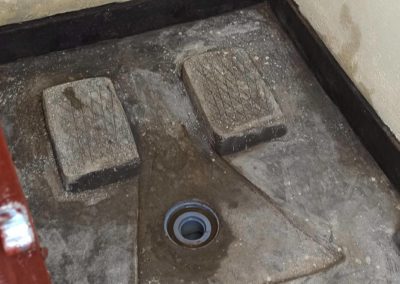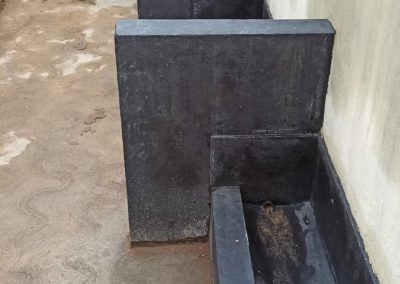Written by Placide Mutangana, WASH Coordinator at Rwanda Red Cross, and Vanessa Hausegger, Skybird WASH Network Facilitator at Austrian Red Cross
The government of Rwanda launched a school feeding program in day-schools to reduce hunger and malnutrition among the pupils. While the program is very successful, it still means for many schools that they heavily rely on external support from the government and its partners which threatens long-term sustainability of the program. Therefore, parents and schools have been called upon to ensure nutritious food is made available locally.
This brings to light other challenges as many pupils in rural areas come from poor households relying on subsistence agriculture where parents are unable to support the schools. Schools usually have small plots of land which could be farmed but they lack agricultural inputs like seeds, manure, and fertilizer.
On the other hand, many schools face challenges with regards to sanitation. Often, they pay a lot of money to construct latrines and afterwards it is expensive to pay for the emptying of the pits.
Two birds with one stone or one solution to tackle two issues
The project team at Rwanda Red Cross (RRC) proposed to pilot ECOSAN latrines at the school from where the diverted urine and excreta shall be distributed into the fields of a women farming cooperative who can use it as organic fertilizer to increase crop production.
The project team quickly faced some barriers as local authorities were not comfortable with the ECOSAN technology because they had some problems with it in the past. An issue was also that the drying bed for faeces may pose a public health risk for pupils as it was not possible to secure the area completely.
Local authorities, technicians and the project team then brainstormed together on what kind of technology they could pilot instead. It was agreed among all parties to modify the current standard school latrines to incorporate a urine collection system for boys and girls as it previously only allowed collection for boys. Through this, the school is piloting a new user interface for girls to collect the urine.
See the different interfaces in the images below. Click on the images to view them in full size.
The urine is then collected in 2 storage tanks through an underground piping system. One tank is directly connected to the latrine cubicles via a pipeline system for collecting the urine from both girls’ and boys’ side, and from urinals. From this tank the urine is carried via an underground pipeline system to the second tank located at the field of a women-led farming cooperative. At the field level, the dilution of the urine takes place at a ratio of 1:3. Then the mix is piped to the perforated pipeline system in the field of the above-mentioned women cooperatives who were also beneficiaries of a previous AutRC / RRC project funded by the Austrian Development Agency (ADA).
The women farming cooperatives also installed a rainwater harvesting system to ensure water supply for irrigation and mixing of the organic fertilizer.
After some preliminary trials, the crop production in fact increased significantly but numbers were compared over different seasons which is why more trials are needed to be sure about its effectiveness.
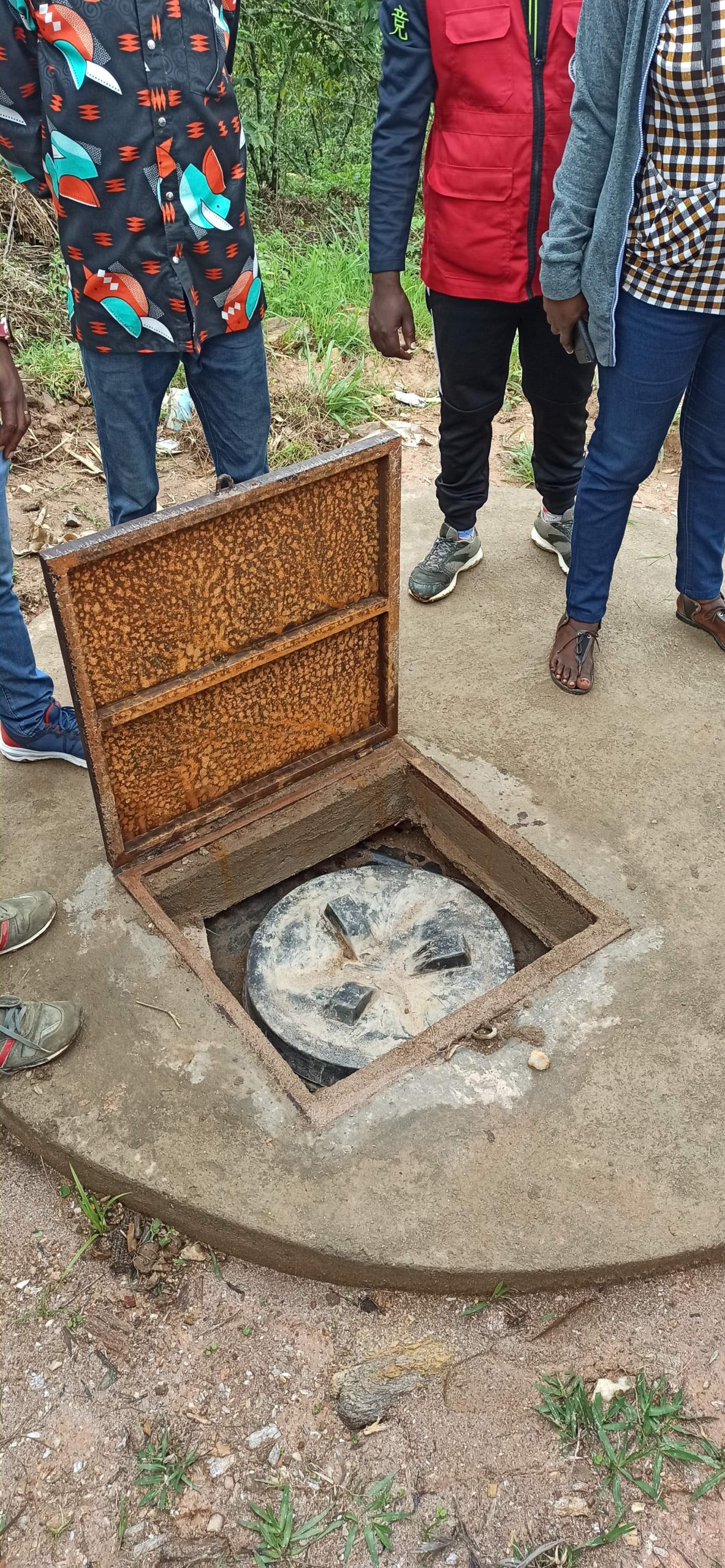
Left: Piping system demonstration at field level
Right: Underground urine storage tank at school level
Double Click on the video or image to view in full size.
The first tank at school level is provided with 2 outlets, once connected to the second tank at field level and another one is a soak pit in case there is no need for urine at the agricultural field. Additionally, rainwater is collected from the roof of the latrine to supply water for handwashing and cleaning of the facilities. The rain water storage tank can be seen in the photo at the very top of this article.
The faecal sludge on the other hand is stored in a pit from which it will be manually removed once full and disposed of in safe pits where it will be covered with soil to avoid public health risks. As of now, there is no intent to use excreta as fertilizer, but the system would allow for it the way it was built. This allows time for stakeholders to trial the system and warm up to this idea.
Pilots at Household Level
Ten model latrines were also constructed on household level. Community members showed great interest in the technology, and many were eager to participate. Unfortunately, the project could only support 10 households. The beneficiaries were chosen through a draw game and they also contributed to the construction by purchasing the 100l storage tank.
The beneficiaries were encouraged to establish kitchen gardens on their premises where they can directly apply the urine as fertilizer. Two households agreed to testing the use of sludge and urine as organic fertilizer which also showed an increase in crop production. Also here, comparisons were made over different seasons which is why more trials need to be made in the future to be sure about the effectiveness.
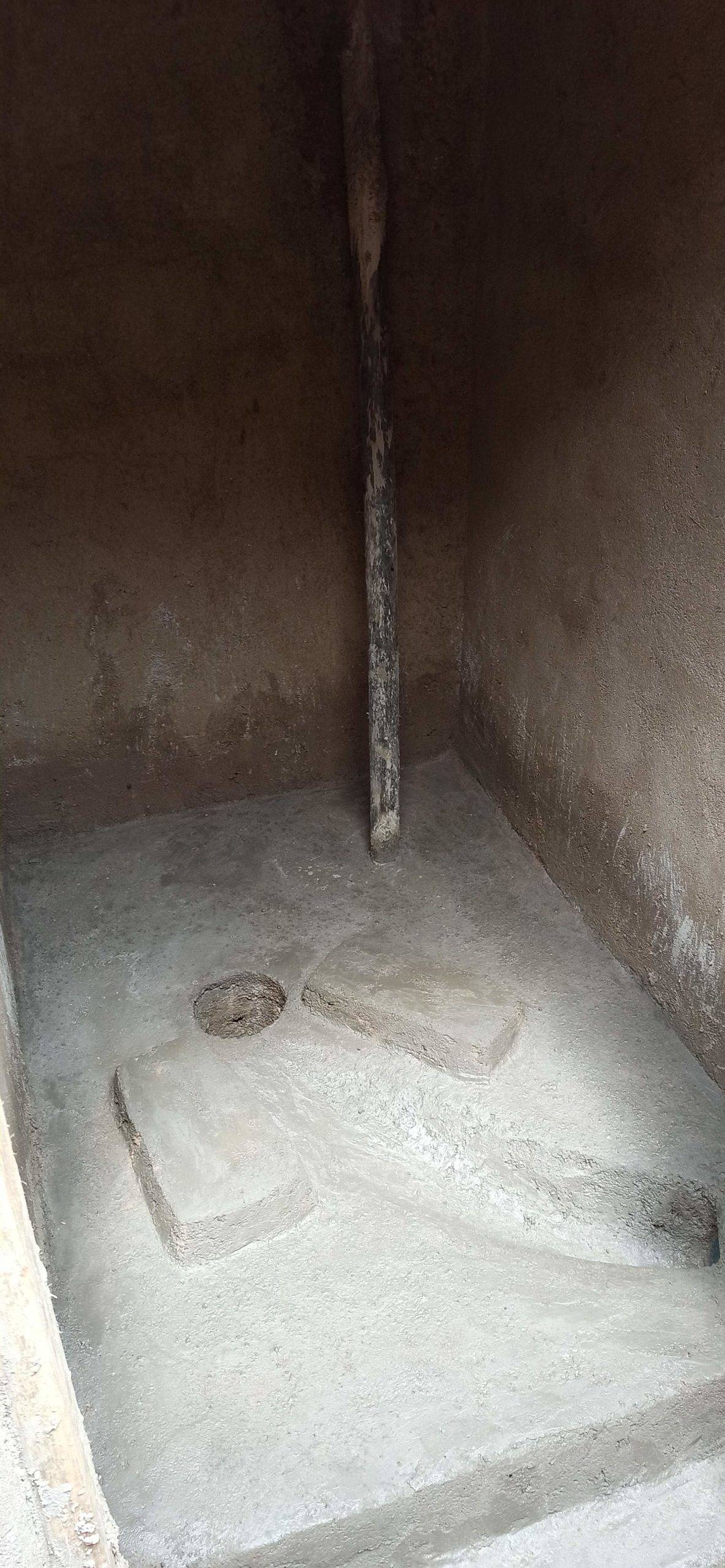
Left: User interface at a pilot latrine on household level
Right: Video showing the system set-up at HH level
Click on the photo and video to view in full size
A safe space for menstruating pupils
A separate building for menstrual hygiene management was constructed to provide a safe space for menstruating pupils at the school. The building houses a room with a bed for girls to rest, a flush toilet and a shower. In case the flush toilet is not working, there is an additional standard latrine which can be accessed on the outside of the building. The room is also supplied with menstrual hygiene items but some items are still lacking due to budget constraints. The used items are collected and buried in a pit but the project recommended the school to get an incinerator for safe disposal.
Additionally, teachers and volunteers have been trained on the RANAS and CHAST approaches to change hygiene behaviours in the long-term. One hygiene club composed of pupils was also established at the school where the trained teachers could cascade their knowledge. The hygiene club helps in addressing behaviour change related to hygiene, such as hand washing, menstrual hygiene, safe use of latrines and safe water collection/storage.
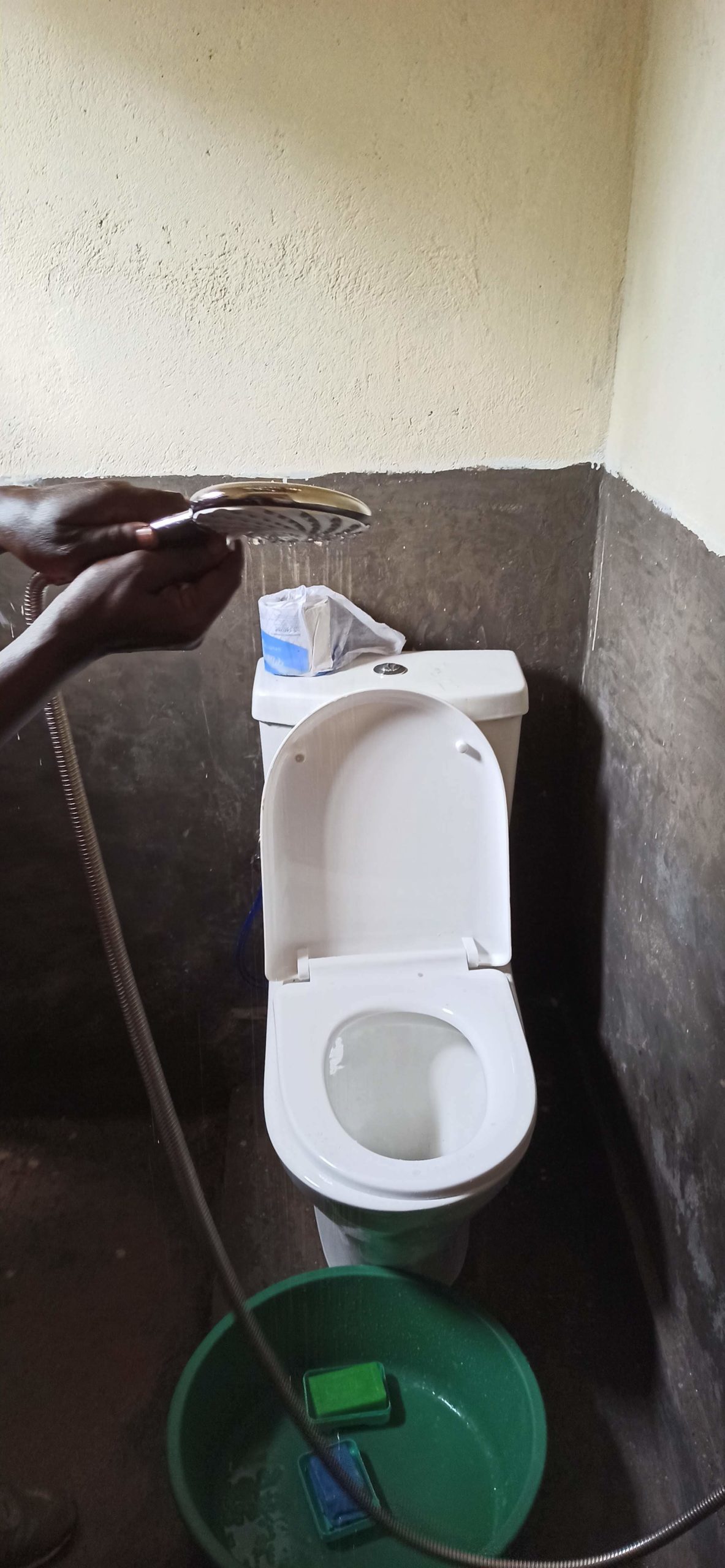
Left: (shaky) tour through the menstrual hygiene room
Right: Toilet and shower in the menstrual hygiene room
Double click on the photo and video to view in full size
Official Handover & End of Project
As of February 2022, the latrine and the menstrual hygiene room have been handed over to the school in an official ceremony. It was said that the innovative ideas and considerations for the local authorities are very much appreciated.
Some HHs have also expressed that they want to construct their own ECOSAN/UDT latrine and use the technology to increase crop production from their kitchen gardens.
The female farming cooperatives have already been waiting for the urine to flow from the school to the field and are now eager to do more trials to increase crop production and subsequently, income generation.


